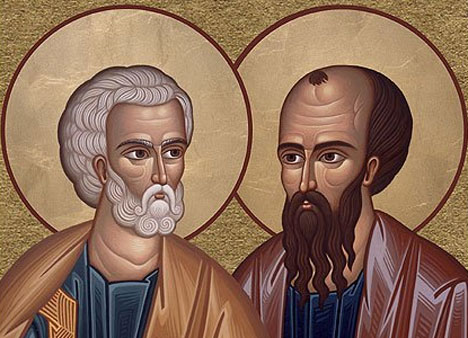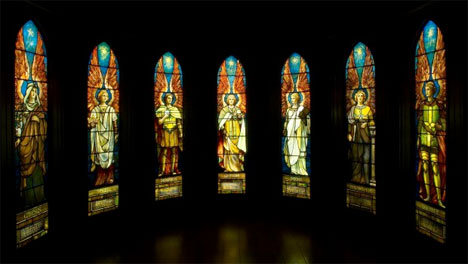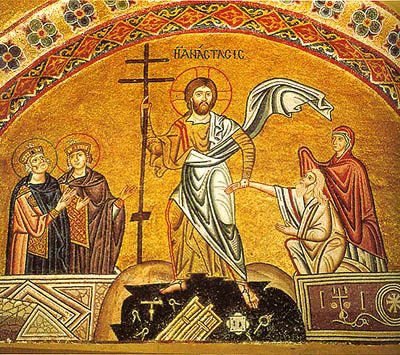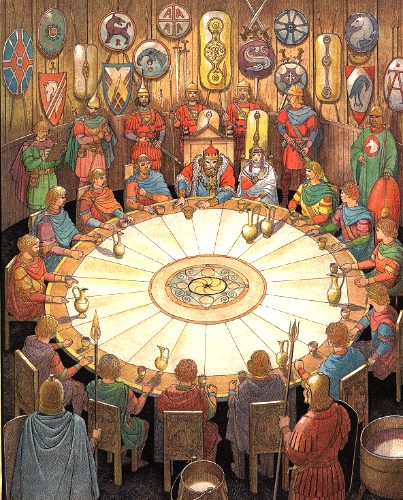Mar
10
2014

For as in those days before the flood they were eating and drinking, marrying and giving in marriage, until the day when Noah entered the ark, and they were unaware until the flood came and swept them all away, so will be the coming of the Son of Man. (Matthew 24:38-39)
Most disputes concerning the meaning of the Scriptures are not due to a lack of trying when it comes to hermeneutics. They result from a lack of due process. By this, I do not mean the process of interpretation but the identification in the Scriptures of the processes of God.
An example would be the meaning of Christ’s words concerning the unpardonable sin, which have terrified many Christians unnecessarily. Blasphemy against the Spirit is unpardonable not because it is the worst sin. It is unpardonable because it is the last sin.
This post has been slain and resurrected for inclusion in my 2015 book of essays, Inquietude.
Continue reading
2 comments | tags: AD70, Babylon, Covenant Theology, Genesis, Hebrews, Herod, Matthew, Matthew 24, Nebuchadnezzar, Noah, Numbers | posted in Bible Matrix, Biblical Theology, Christian Life, The Last Days
Aug
24
2013

“Show Us the Father And We Will Be Satisfied” (John 14:8)
This is the third cycle within the “Numbers” or Ethics section of Galatians. Paul is contrasting the external Ethics of the Law (requiring the perfect obedience of Man) with the internal Ethics of the Spirit (resulting from trust in the perfect obedience of Christ). But there is something deeper here which, it seems to me, is often overlooked.
Continue reading
Comments Off | tags: Abraham, Covenant curse, Covenant Theology, Galatians, Hebrews, Literary Structure, Melchizedek, Paul | posted in Bible Matrix, Biblical Theology, The Last Days
Aug
2
2013

Paul’s Leviticus
“This is where he picks up the fivefold Covenant structure and turns ‘the right hand of fellowship’ into a set of holy knuckledusters.”
This post has been refined by fire and included in a new book, The Shape of Galatians.
Continue reading
Comments Off | tags: Circumcision, Food laws, Galatians, Hebrews, Leviticus, Literary Structure, Moses, Paul | posted in Bible Matrix, Biblical Theology, Ethics, The Last Days
Jul
26
2013
 Is the book of Revelation a “Covenant lawsuit”? It certainly follows the fivefold legal Covenant pattern. However, its prophetic warnings are not addressed to the Jewish leaders. It was too late for them. The book does describe the destruction of Jerusalem through “the testimony of two witnesses,” but Gary DeMar suggests it was more like a libretto for the Christian spectators. He writes:
Is the book of Revelation a “Covenant lawsuit”? It certainly follows the fivefold legal Covenant pattern. However, its prophetic warnings are not addressed to the Jewish leaders. It was too late for them. The book does describe the destruction of Jerusalem through “the testimony of two witnesses,” but Gary DeMar suggests it was more like a libretto for the Christian spectators. He writes:
Continue reading
Comments Off | tags: Corinthians, Covenant Theology, Galatians, Gary DeMar, Hebrews, Paul, Revelation | posted in Against Hyperpreterism, Biblical Theology, Quotes, The Last Days
Jan
24
2013
Final excerpt from the early pages of A. T. Ross’ Hebrews commentary. Part 1 here.
Temple and Typology
The evidence that Hebrews was written before the fall of Jerusalem in A. D. 70 is strengthened by a few other observations. Timothy is said to be alive (13:23), and while it cannot be certainly determined that this is the same Timothy that traveled with Paul, there exists no good reason not to think it is the same Timothy to whom Paul wrote two epistles.
Continue reading
2 comments | tags: AD70, Adam Ross, Hebrews | posted in Biblical Theology, Quotes, The Last Days
Jan
23
2013
 [Today and tomorrow I’m posting a couple of excerpts from the draft of a forthcoming book-length commentary by A. T. Ross, The Messianic Priest-King: An Exposition of the Book of Hebrews. His goal has been to take an approach to Hebrews similar to David Chilton’s concerning the book of Revelation, “paying close attention to the symbolic dimension and how the intertextual uses of the Old Testament impacted the argument.” Dealing with the chiastic structures and typology, and quoting all the best guys, Adam has really done his homework. I’ll keep you posted on publication.]
[Today and tomorrow I’m posting a couple of excerpts from the draft of a forthcoming book-length commentary by A. T. Ross, The Messianic Priest-King: An Exposition of the Book of Hebrews. His goal has been to take an approach to Hebrews similar to David Chilton’s concerning the book of Revelation, “paying close attention to the symbolic dimension and how the intertextual uses of the Old Testament impacted the argument.” Dealing with the chiastic structures and typology, and quoting all the best guys, Adam has really done his homework. I’ll keep you posted on publication.]
Continue reading
Comments Off | tags: Adam Ross, Hebrews | posted in Biblical Theology, Quotes, The Last Days
Mar
7
2012
or Will Jesus Spit Us Out?

“But let a man examine himself, and so let him eat of the bread and drink of the cup. For he who eats and drinks in an unworthy manner eats and drinks judgment to himself, not discerning the Lord’s body. For this reason many are weak and sick among you, and many sleep.” (1 Cor. 11:28-30)
Some more detailed thoughts on what God is doing in the Lord’s Table. Part 1 here.
Covenant Renewal Worship follows the Bible Matrix. This means that our Christian worship recapitulates the Creation Week, the Feasts of Israel, and the journey from slavery to Sabbath (servants to sons), and the process of maturity, from childhood to adulthood. [1]
Continue reading
Comments Off | tags: Baptism, Communion, Corinthians, Covenant Theology, Federal Vision, Hebrews, James Jordan, Judas, Worship | posted in Biblical Theology, Christian Life, The Last Days
Nov
28
2011
1 Peter 2:4-10 | Sermon Notes

Cut and Uncut Stones
4 As you come to him, the living Stone—rejected by humans but chosen by God and precious to him—
Peter’s use of the stone image should bring many Old Testament images to mind:
- the precious stones of Havilah, intended to be mined from the Land to glorify the sanctuary [1]
- the false stones of Babel (they had brick for stone)
- Jacob’s head on the altar stone, in a deep sleep
- Jacob’s raising of an altar stone in Bethel: “And this stone which I have set as a pillar shall be God’s house, and of all that You give me I will surely give a tenth to You.”
- Zipporah’s sharp stone of circumcision
- Moses enthroned on a stone at the defeat of Amalek
- Israel’s altars of stone (one stone for each tribe) at Sinai and Carmel
- The precious stones on the breastplate of the High Priest
- The tablets of stone carrying the ten words
- The stones of the “Levitical” house in the city filled with plague
- The stones of judgment, the ground itself as a witness executing transgressors outside the camp
- The black and white stones in the ephod
We have two types of stones: uncut stones (altar, judgment – the Law) and cut, or precious, stones (glory and riches – Grace).
Continue reading
1 comment | tags: Circumcision, Exodus, Ezekiel, Genesis, Havilah, Hebrews, High Priest, Peter, Satan, Sinai, Solomon, Tabernacle, Temple | posted in Bible Matrix, Biblical Theology
Sep
4
2011
Here’s the feast/Covenant structure in the doxology that appears near the end of the book of Hebrews:
Continue reading
Comments Off | tags: Feasts, Hebrews | posted in Bible Matrix, Biblical Theology
Aug
31
2011

Hebrews 13:1-14 | 27 August 2011
Introduction
The book of Hebrews follows the Covenant pattern, most obvious in Deuteronomy. The final point is Succession arrangements, the future. The author outlines the most important things that those in the household of faith must remember. He is dealing with the major landmines hidden in the path of Jewish believers in the first century church.
Continue reading
Comments Off | tags: Covenant Theology, Hebrews | posted in Biblical Theology, Sermon Notes
































